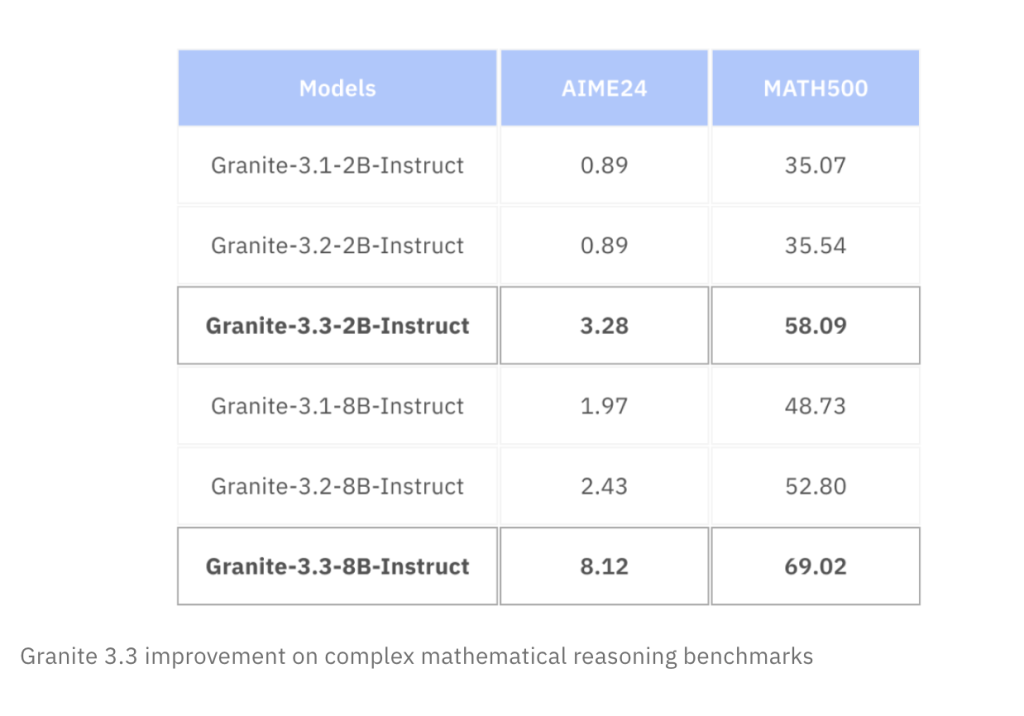
IBM Unveils Granite 3.3 8B: A Breakthrough in Speech-to-Text Technology
As artificial intelligence becomes increasingly integrated into business operations, the need for versatile, efficient, and transparent models is more critical than ever. Traditional solutions often fall short in meeting these demands. Open-source models may lack the specificity required for certain industries, while proprietary systems can restrict access and customization. This gap is particularly evident in areas such as speech recognition, logical reasoning, and retrieval-augmented generation, where fragmented technologies can hinder operational efficiency.
Granite 3.3: Enhancements in Speech, Reasoning, and Retrieval
IBM has launched Granite 3.3, a collection of open-source foundation models tailored for enterprise use. This latest version introduces significant improvements in three key areas: speech processing, reasoning abilities, and retrieval methods. The Granite Speech 3.3 8B model is IBM’s first open speech-to-text (STT) and automatic speech translation (AST) solution, boasting enhanced transcription accuracy and superior translation quality when compared to Whisper-based systems. Its design accommodates long audio sequences while minimizing the introduction of artifacts, making it practical for real-world applications.
Key Features of Granite 3.3
- Fill-in-the-Middle (FIM) Text Generation: Expands the model’s capabilities to support tasks like document editing and code completion.
- Enhanced Reasoning: Shows marked improvements in symbolic and mathematical reasoning, as evidenced by benchmark tests where it outperformed competitors such as Llama 3.1 8B and Claude 3.5 Haiku on the MATH500 dataset.
Technical Architecture and Functionality
The Granite Speech 3.3 8B model employs a modular architecture that includes a speech encoder and LoRA-based audio adapters. This structure allows for efficient fine-tuning specific to various domains while maintaining the model’s overall adaptability. It supports both transcription and translation, facilitating cross-lingual content processing.
Additionally, the Granite 3.3 Instruct models feature fill-in-the-middle generation and five LoRA adapters designed for retrieval-augmented generation (RAG) workflows. These adapters enhance the integration of external knowledge, which improves the accuracy and contextual relevance of generated content.
Another significant innovation is the adaptive LoRA (aLoRA), which optimizes memory usage and reduces latency by reusing the key-value cache across inference sessions. This is particularly beneficial in environments where streaming or multi-hop retrieval is essential, allowing for better performance without excessive computational costs.
Performance Metrics and Deployment Options
Granite Speech 3.3 8B has demonstrated superior performance compared to Whisper-style models in both transcription and translation across various languages. It maintains coherence and accuracy even with extended audio inputs.
In terms of symbolic reasoning, the Granite 3.3 Instruct model achieved improved accuracy on the MATH500 benchmark, surpassing similar models within the 8B parameter range. The RAG-specific LoRA and aLoRA adapters also contribute to enhanced retrieval integration, which is vital for enterprises dealing with dynamic content and long-context queries.
IBM has made all models, along with LoRA variants and tools, open-source and accessible via Hugging Face. Deployment options are also available through IBM’s platform, as well as third-party services like Ollama, LMStudio, and Replicate.
Conclusion
Granite 3.3 represents a significant advancement in IBM’s mission to create robust, modular, and transparent AI systems. This release addresses critical challenges in speech processing, logical inference, and retrieval-augmented generation through tangible technical improvements. With features like memory-efficient retrieval, support for fill-in-the-middle tasks, and advancements in multilingual speech modeling, Granite 3.3 stands out as a valuable asset for enterprise environments. Its open-source nature further promotes widespread adoption, experimentation, and ongoing development within the AI community.
For businesses looking to leverage AI effectively, consider exploring how Granite 3.3 can transform your operations. Identify processes that can be automated, track key performance indicators to measure the impact of your AI investments, and select tools that align with your goals. Start with manageable projects, assess their effectiveness, and gradually expand your AI initiatives.
For guidance on integrating AI into your business, feel free to reach out to us at hello@itinai.ru or connect via Telegram, X, or LinkedIn.



















